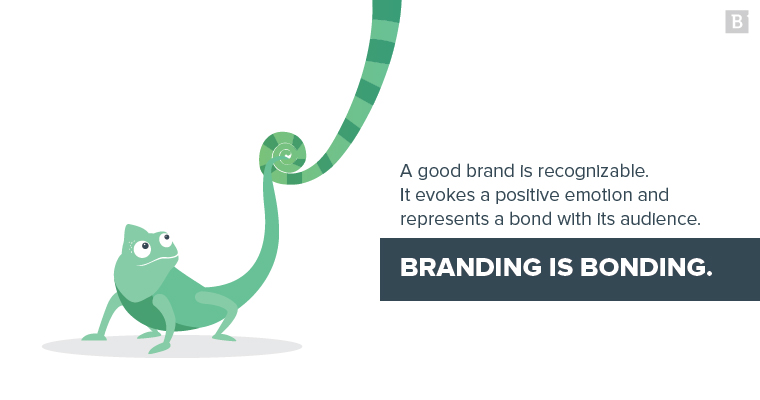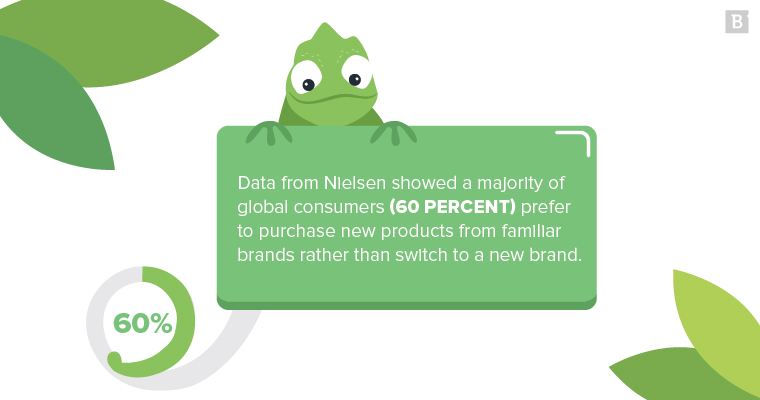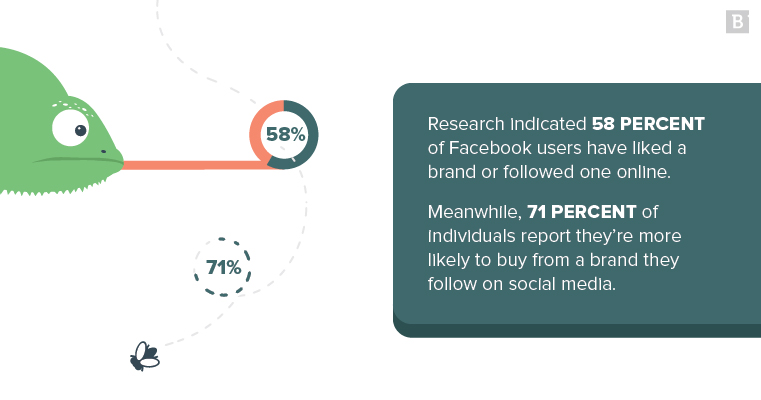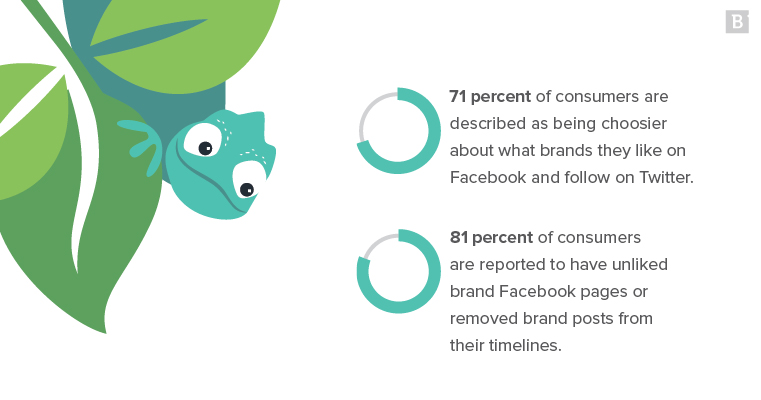You are more than your logo.
The American Marketing Association defines a brand as a “name, term, design, symbol or any other feature that identifies one seller’s good or service as distinct from those of other sellers.”
But there’s more to it than that, isn’t there?
According to Brafton Design Director Ken Boostrom, a brand is a bond.
“A good brand is recognizable,” he said. “It evokes a positive emotion and represents a bond with its audience. Branding is bonding.”
Content marketing revolves around promoting and selling, and your brand is what’s on offer. The question is: Do people want to buy?
Only through brand development can you answer with a resounding “yes.”

Brand development and bottom lines
No matter your product or service, odds are you aren’t alone in the market. And if by some miracle you are, it’s only a matter of time before competition materializes.
With no shortage of options to choose from, consumers are hungry for any mental shortcut to help them make a decision. Enter: Brand awareness.
Far from a content marketing buzzword, brand awareness is a proven driver of profitability. Just ask the Strategic Planning Institute, which demonstrated the connection between brand awareness, market share and return on investment as far back as 1980. What worked in an analog world continues to pay dividends in the digital marketplace.
Becoming a known quantity in your space simplifies the purchasing process for consumers. It also helps build brand loyalty.
Data from Nielsen showed a majority of global consumers (60%) prefer to purchase new products from familiar brands rather than switch to a new brand.

The proliferation of social media has only upped the ante when it comes to brand loyalty.
Research indicated 58 percent of Facebook users have liked a brand or followed one online. Meanwhile, 71 percent of individuals report they’re more likely to buy from a brand they follow on social media.
Brand loyalty is especially important when you consider it’s up to seven times more expensive to acquire new customers than it is to retain current ones. In fact, data showed increasing customer retention rates by as little as 5 percent could boost profits anywhere from 25 to 95 percent.
What’s more, brand development can help you turn customers into evangelists. Figures showed brands that inspired emotional intensity received three times as much word-of-mouth promotion as those that did not.
Consistency is key
Successful brand development isn’t possible without consistency.
“Branding is an investment that gives returns over a long period of time,” Ken said. “If you want a short-term revenue boost, it’s called gambling, not branding. A consistent message over a consistent time period creates the brand in the consumer’s mind.”
Survey current brand giants for proof of concept. For instance, when you purchase an Apple product, no matter what it is, you have certain expectations in mind: sleek design and ease of use chief among them.
“Under the skin, there’s a brand promise to you, the consumer,” Ken continued. “Whatever it’s going to be: low prices, high quality, whatever. Over the course of a lifetime, a person buys on average seven cars. By consistently branding, one brand will be three out of those seven. But only if you’re consistent in your quality and brand promise. You have to back up what you’re saying.”
Content marketing for brand development
Developing your brand boosts your bottom line. The logical next question is: How do I do so effectively?
While traditional branding elements are important (McDonald’s’ Golden Arches and “ba da ba ba bah” jingle are known the world over for a reason), developing your brand in the digital world comes down to content.
Blog posts, infographics, eBooks, white papers, emails, videos, social media updates – all these and more influence consumer perception of your brand, and perception is reality.
A content marketing strategy that maintains consistent messaging, provides enhanced online visibility and establishes your business as a credible resource is the primary objective.
However, touting your products and services isn’t exactly groundbreaking. If you wish to cut through the noise, you have to find your voice.

The online marketplace is saturated with content, but quantity does not equal quality. Too many brands opt for safe, sterile marketing. It’s businesses that incorporate a recognizable brand voice that stand out.
Beyond providing prospective customers with valuable, relevant information designed to guide them through the sales funnel, your content must demonstrate your brand’s personality and values.
Consider:
- 71 percent of consumers are described as being choosier about what brands they like on Facebook and follow on Twitter.
- 81 percent of consumers are reported to have unliked brand Facebook pages or removed brand posts from their timelines.
People pick brands the way they do friends, and no one wants to spend time with someone droning on in a monotone, using overly formal sentence construction and excessively salesy language. Adopt a point of view and add unique insight to the tried and true topics of your industry.
Branding behind the scenes
Content marketing drives search engine optimization opportunities, and SEO is essential to brand awareness online. The more often you show up on search engine results pages (SERP), the greater your brand authority perception among consumers. People are more likely to click on a name they know and trust.
In addition to producing content that opens the door to higher SERP rankings, it’s vital to ensure your microdata and name, address and phone number details are accurate and consistent to be displayed properly.
For instance, Google My Business is a free service that allows you to update your business listing when people search for you or similar businesses in Google and in Google Maps. Ensure your business populates the knowledge graph on appropriate SERPs and features images and any applicable reviews.
Measure your brand development
Brands are seemingly built on intangibles – the emotional connections they create among consumers. However, it’s possible to measure your brand development through content marketing.
Among the key metrics you can use are:
- Search volume: The number of people searching for your brand name, or your specific products and services, is a solid gauge of your brand development efforts.
- Direct website traffic: Visitors who use your website URL instead of a search engine indicate brand recall and trust.
- External links: Link building is essential to SEO, and is also a helpful measurement of your brand’s reputation among others online.
- Social shares: If your blog posts or other content marketing assets are being shared on social networks, it’s growing your audience and demonstrating brand buy-in from prospective customers.
- Social engagement: If people are interacting with your brand on social networks, either through likes, follows or comments, it shows they see you as a brand worth engaging with.
It’s important to measure brand development using these metrics not just in terms of your historical performance, but also how you stack up to competitors in your space.

Using these metrics, you can prove ROI in terms of conversions.
For instance, using Google Analytics, you can create goals tied to specific actions taken by direct website visitors, referral traffic or traffic received from social sources. One option is measuring how many leads are generated from a gated asset download, such as an eBook or white paper.
Determine how much money each lead is worth based on how many leads convert to sales, as well as your average sale price. From there, you can clearly see how effective your brand development efforts are based on different channels and separate sources, as well as what those efforts are worth.
If you’re underperforming in certain areas, you can refocus your efforts by creating content that is more likely to be shared on social networks or implementing guest blogging and influencer outreach into your content marketing strategy to secure more external links.
Strong bonds equal branding success
Content marketing is only one piece of the brand development puzzle, but it’s an essential one. The flashiest logos and most impressive product promises will fail to engage your target audience if they can’t find you online or learn more about your brand through high-quality content.
With that said, it’s vital to approach all content marketing with your brand in mind. The message you’re delivering to your audience, the consistency of that messaging, and the voice you use to deliver it will all play a role in your brand development effectiveness, both in terms of consumer bonding and SEO.
Only by measuring your brand performance online and adjusting accordingly can you maximize the impact of brand development and ensure your content marketing strategy pays off.
Branding is bonding. Make sure the bond you have with your customers is strong.






